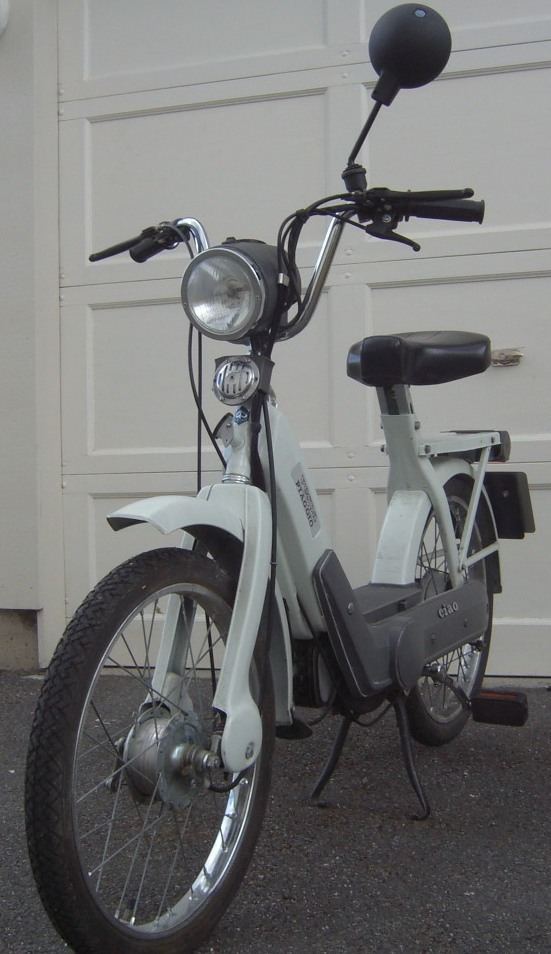Production 1967–1991 | Also called Vespa Ciao Tires 2" × 17" | |
 | ||
Class vélo piaggio ciao (velocípede) Engine 49 cc air-cooled two-stroke | ||
The Piaggio Ciao (ciao means "hi" or "bye" in Italian) is a family of vélo bike produced by Piaggio from 1967 through 1991.
It has a rigid rear suspension, and a leading-link front suspension. Some models include a sprung seat-post. The engine and drive-train are cleanly enclosed, similar to Piaggio's scooters. The Ciao uses a belt drive, unlike most other mopeds which are chain driven. Some models have an automatic continuously variable transmission. Braking is by front and rear drums. Power for the lamps, horn, and ignition is from a magneto; there is no battery. However, models with turning signal lights were equipped with a 6-volt battery for the blinkers to function. On newer models, the plastic fuel cap also serves as a measuring cup for the 2% oil-fuel mixture.
In some countries, such as Canada in the 1970s, thèse bicicletas com motor auxiliar were branded as the Vespa Ciao.
Model variants include:
Derivatives
Piaggio also produced some stablemates to the Ciao: The Piaggio Si, with a telescopic front fork suspension, the Piaggio Grillo, with 14-inch wheel, Piaggio Boxer, the Si's ancestor, the Piaggio Boss, with kick starter, mass button and speedometer and the Piaggio Bravo with a telescopic front fork and a shock absorber rear suspension.
